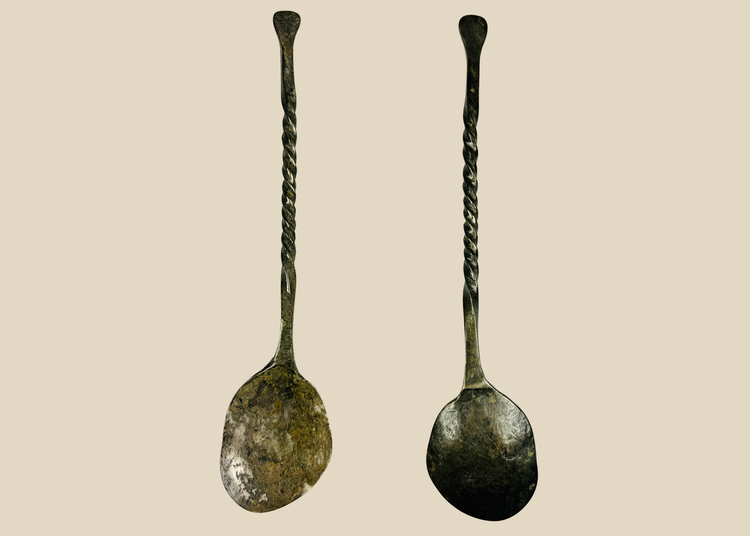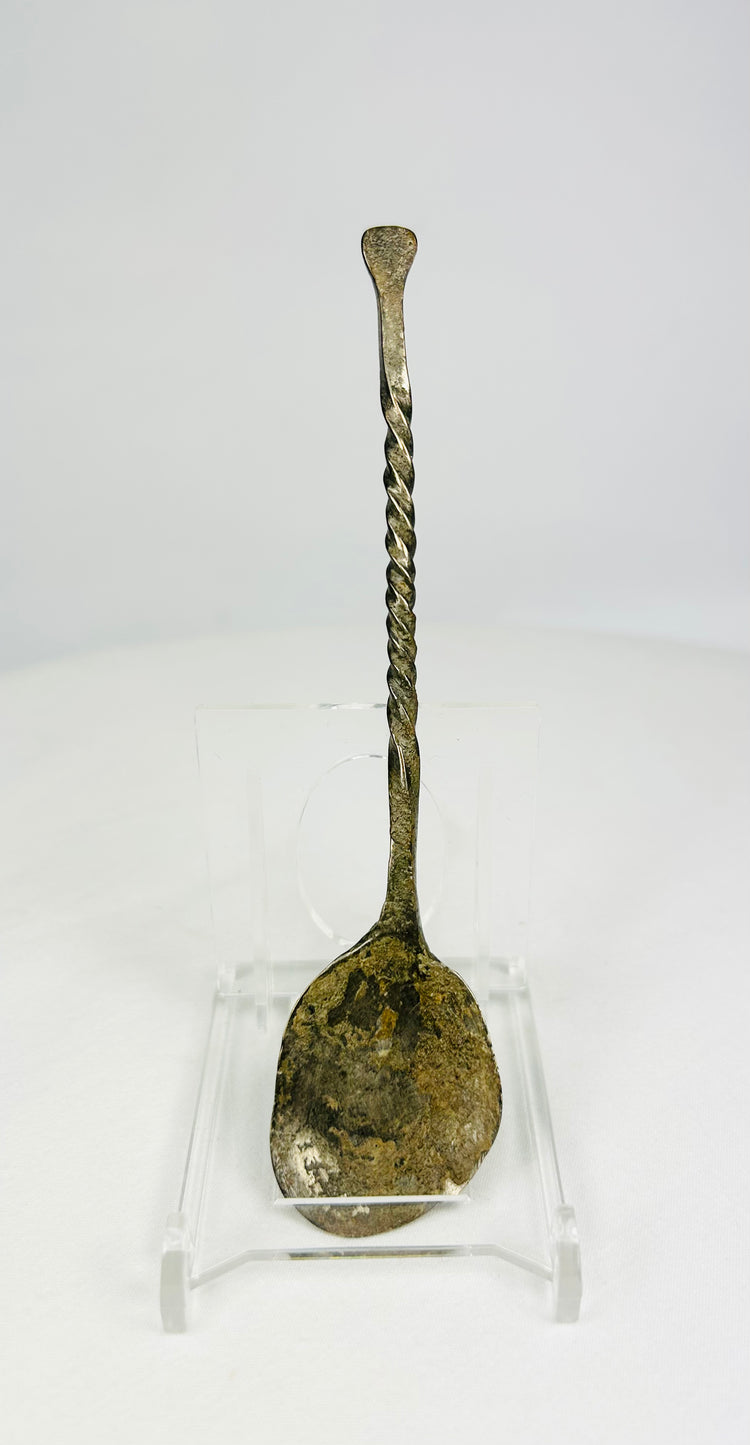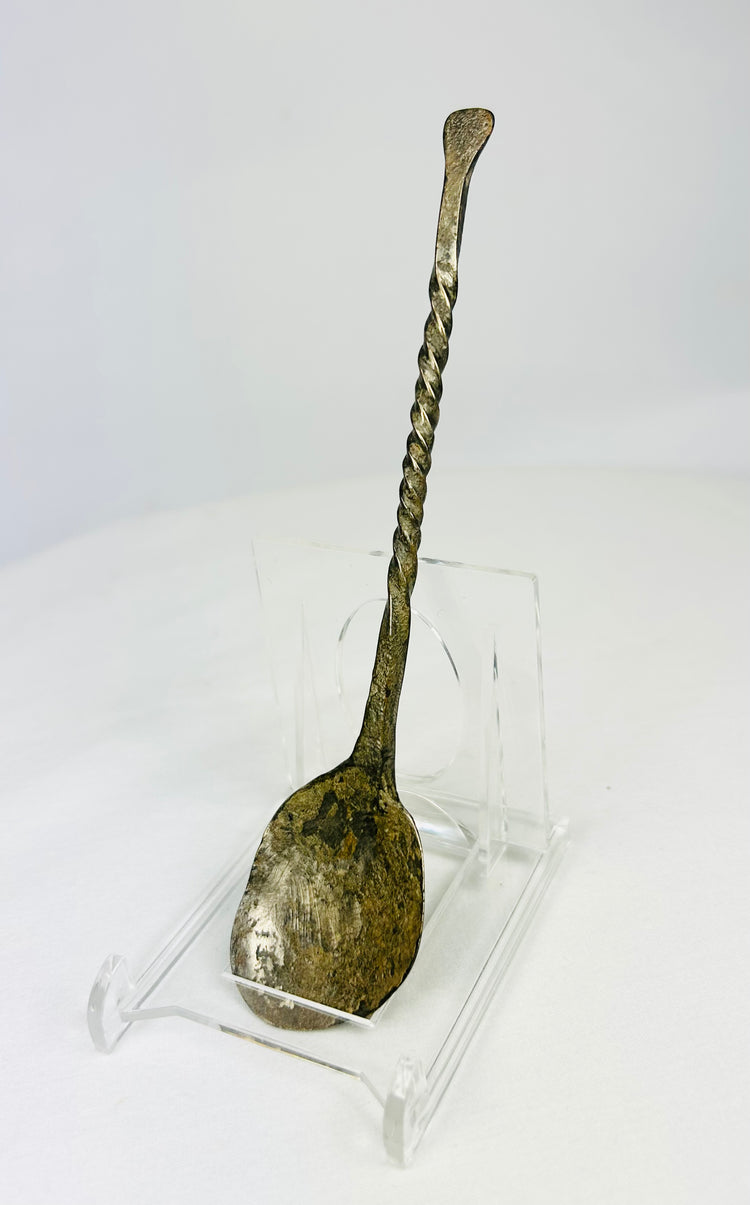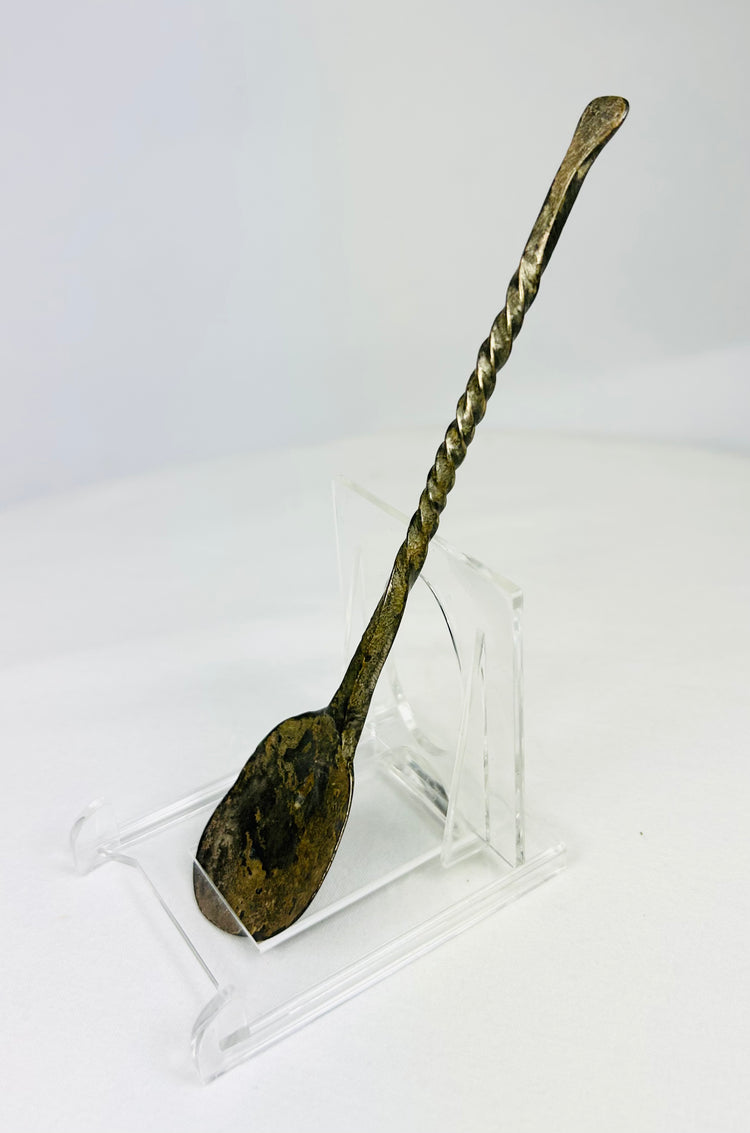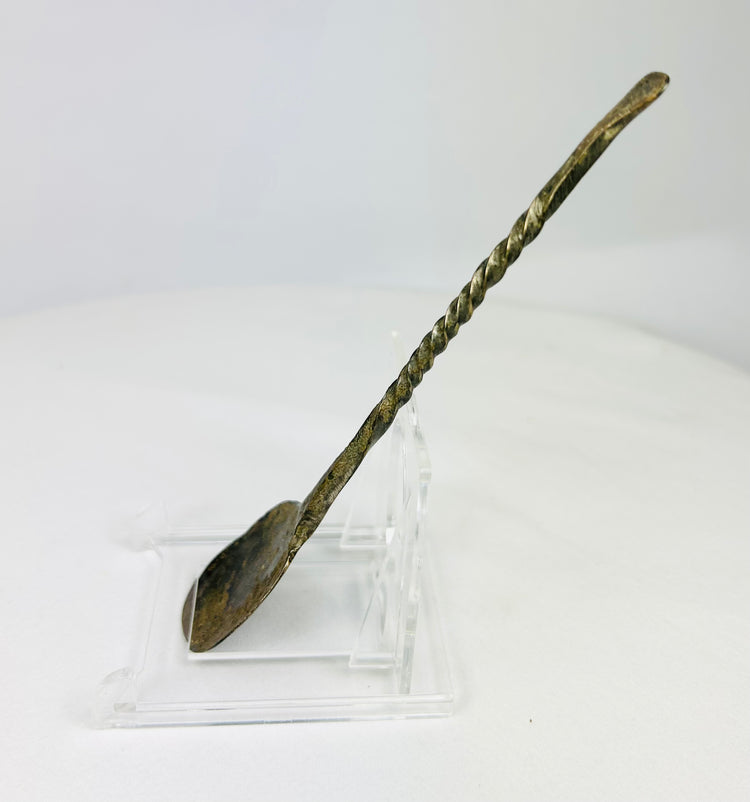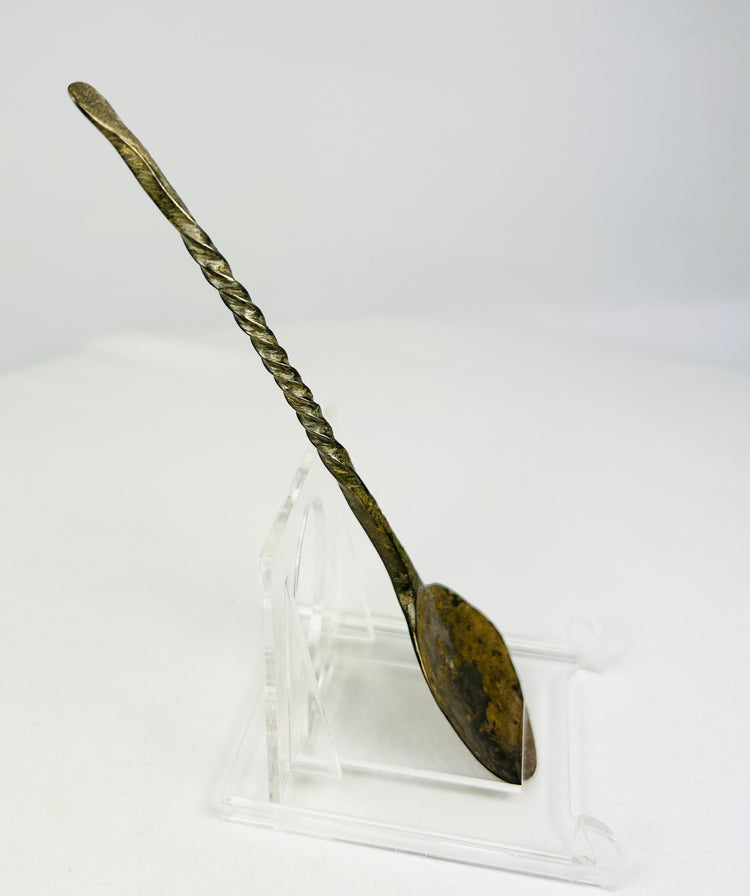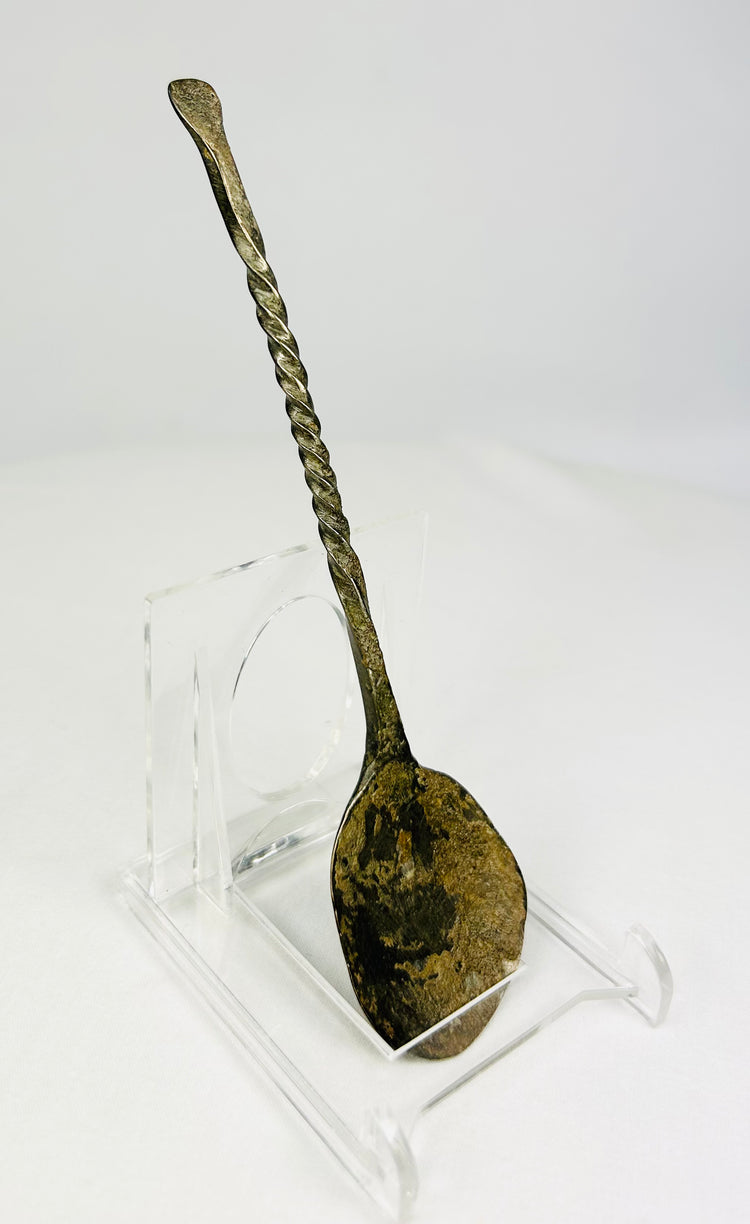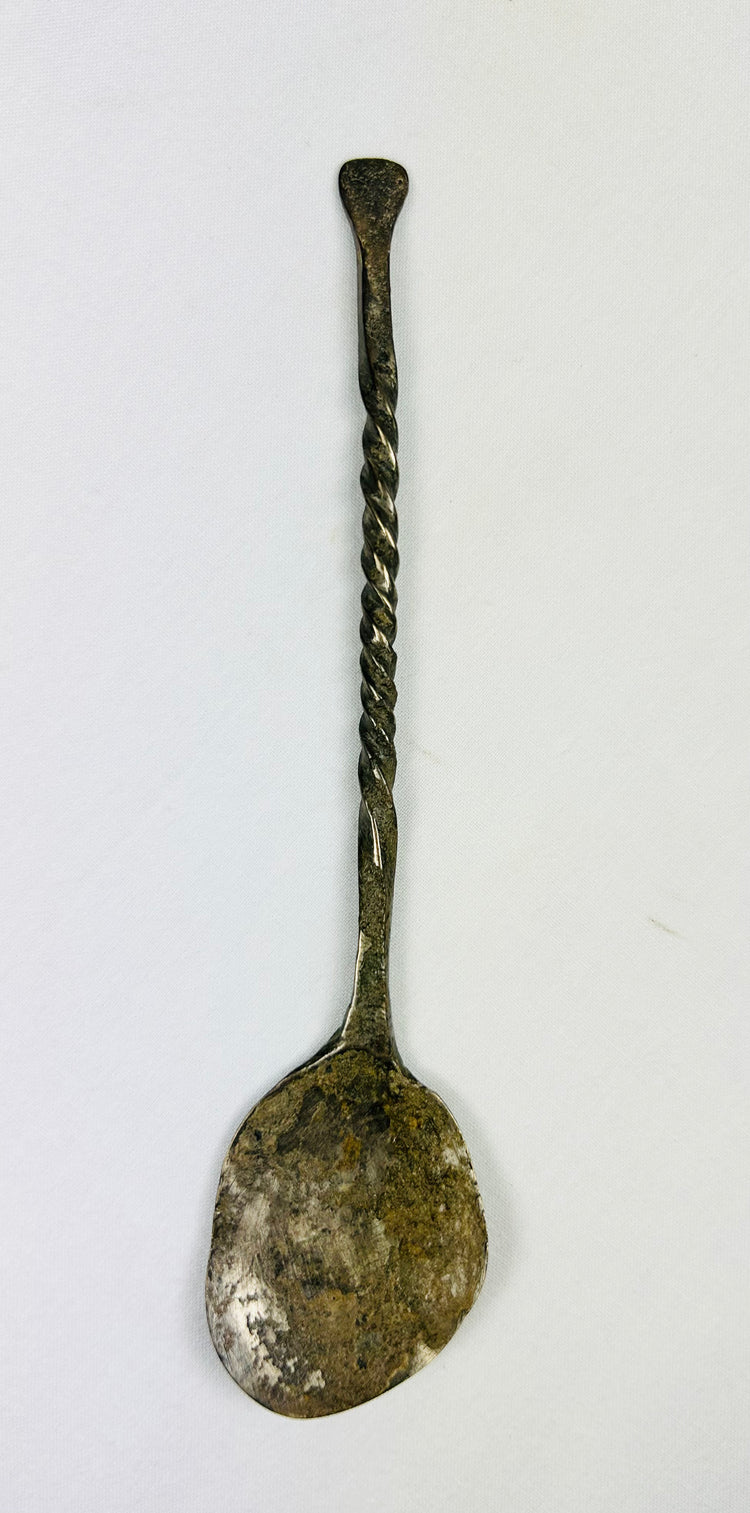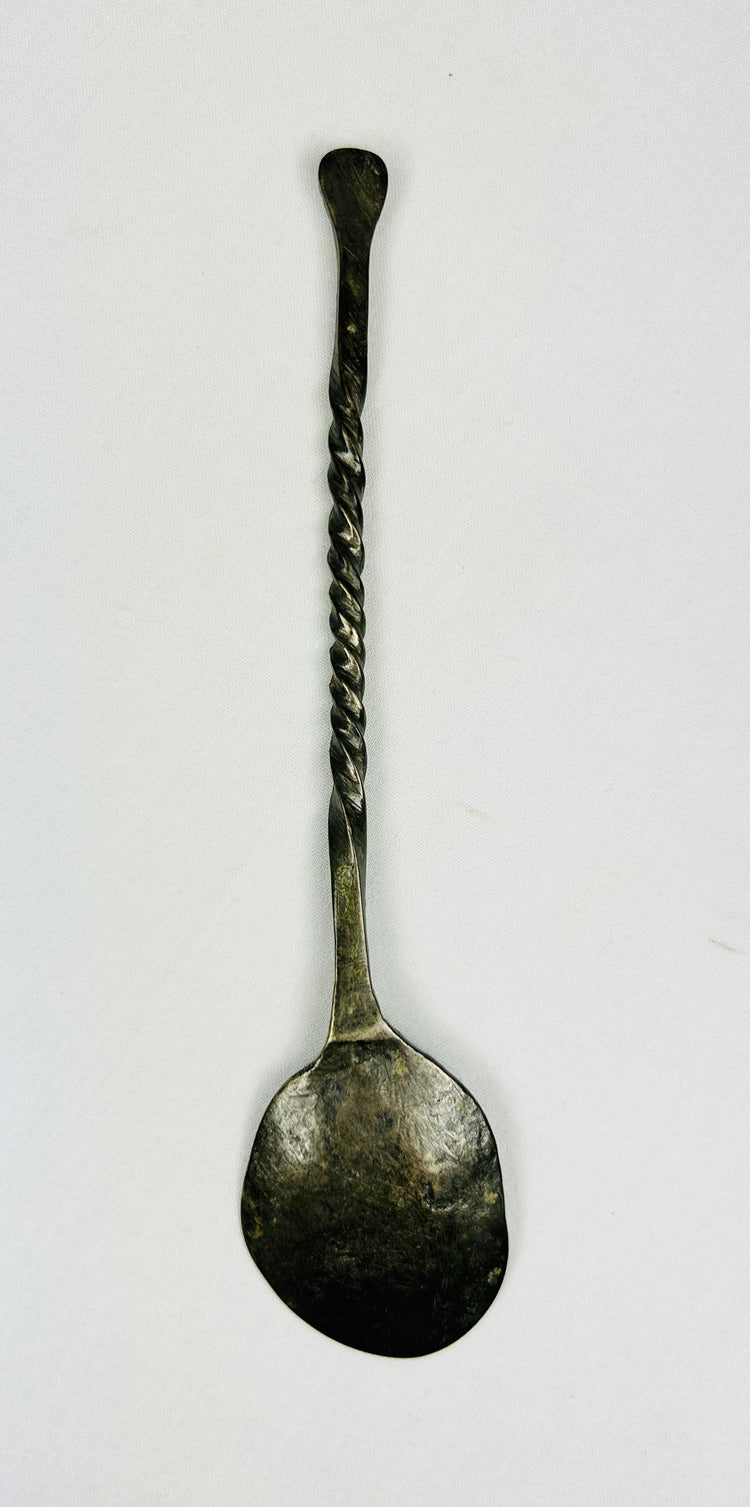Hand-Forged Spoon with Twisted Handle | Circa 2nd Century AD
Descripción
Más
Menos
Historical Context & Origin
Region: Roman Empire (likely Mediterranean region)
Material: Cast bronze with natural patina
Period: Circa 2nd Century AD
Description
An authentic Ancient Roman bronze spoon, elegantly forged with a twisted handle and a gently rounded bowl. This finely crafted utensil reflects the daily life and refined dining practices of Roman households during the height of the Empire. Its hand-twisted stem and smooth bowl reveal the artisan skill and aesthetic sensibility typical of Roman bronze work.
Features
- Hand-forged bronze with spiral-twist handle
- Shallow oval bowl with smooth interior
- Natural dark green and brown patina from age
- Balanced proportions, refined yet practical
Cultural Significance
Such spoons were common in Roman domestic settings, used for meals, oils, or medicinal mixtures. They exemplify the Roman approach to craftsmanship—where functionality met beauty. Surviving examples are rare and offer a tactile connection to ancient daily life and hospitality traditions.
Condition
Excellent ancient condition with stable patina and light encrustation from burial. Minor surface wear consistent with age.
Dimensions
Length: 5.5 in
Width: 1.25 in
Age
Circa 2nd Century AD
Learn More
For further insight into Roman craftsmanship and dining culture, explore:
Design, Function and Use-Wear in Spoons — Journal of Roman Archaeology
A scholarly study on Roman spoons, their design, and role in everyday life.
The Roman Banquet — The Metropolitan Museum of Art
A look at Roman dining rituals and utensils that reveal the artistry behind objects like this bronze spoon.
Descripción
Historical Context & Origin
Region: Roman Empire (likely Mediterranean region)
Material: Cast bronze with natural patina
Period: Circa 2nd Century AD
Description
An authentic Ancient Roman bronze spoon, elegantly forged with a twisted handle and a gently rounded bowl. This finely crafted utensil reflects the daily life and refined dining practices of Roman households during the height of the Empire. Its hand-twisted stem and smooth bowl reveal the artisan skill and aesthetic sensibility typical of Roman bronze work.
Features
- Hand-forged bronze with spiral-twist handle
- Shallow oval bowl with smooth interior
- Natural dark green and brown patina from age
- Balanced proportions, refined yet practical
Cultural Significance
Such spoons were common in Roman domestic settings, used for meals, oils, or medicinal mixtures. They exemplify the Roman approach to craftsmanship—where functionality met beauty. Surviving examples are rare and offer a tactile connection to ancient daily life and hospitality traditions.
Condition
Excellent ancient condition with stable patina and light encrustation from burial. Minor surface wear consistent with age.
Dimensions
Length: 5.5 in
Width: 1.25 in
Age
Circa 2nd Century AD
Learn More
For further insight into Roman craftsmanship and dining culture, explore:
Design, Function and Use-Wear in Spoons — Journal of Roman Archaeology
A scholarly study on Roman spoons, their design, and role in everyday life.
The Roman Banquet — The Metropolitan Museum of Art
A look at Roman dining rituals and utensils that reveal the artistry behind objects like this bronze spoon.
También te puede interesar
























